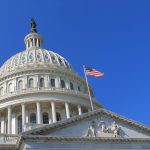Published December 9, 2013
The Obama White House has spent the past week trumpeting the supposedly fixed healthcare.gov website, with the hope that the strong negative perceptions now held of Obamacare can be partially reversed in the coming months. Among other things, we are now told that 29,000 people “signed up” for coverage through healthcare.gov on December 1 and 2. (Incidentally, this story emerged after administration officials had repeatedly refused to provide real-time enrollment counts in October and November.) The law’s defenders are using this information to make the case that all is now well and the program is back on track.
It is certainly true that healthcare.gov is performing better than it did on October 1. As others have noted, that is not saying much. But, despite the relentless cheerleading by the administration and its allies, no one should assume that the Obamacare website story is behind us. The real test of healthcare.gov is whether it is transmitting accurate data about those signing up for coverage to the insurance plans selected by the consumers. We have no idea if that is happening today, and plenty of reason to suspect it is not.
For starters, the administration has never fulsomely described the problems that have been “fixed.” It is a simple matter to make a front-end enrollment system work if you are not worried about accuracy on the back end. One of the main reasons healthcare.gov was so slow and cumbersome in early October was because of the many checks that had to be built into the system to verify payment accuracy. This is, after all, taxpayer resources we are talking about here. Healthcare.gov is supposed to accurately screen and calculate monthly “premium subsidies,” paid out of the federal treasury, for millions of potential insurance enrollees. What if the administration “fixed” healthcare.gov by turning off some controls? Sure, it would speed up processing, but at what price? Given the debacle that was unfolding in October, would anyone be surprised if the administration opted to throw all worries about erroneous payments overboard so that more people could quickly sign up for coverage?
Further, multiple media reports indicate that insurers are still not receiving accurate enrollment information in many cases. Fully one-third of the sign-ups in October were corrupted, meaning that there are already several thousand Americans who think they have signed up successfully for health insurance but really have not. And the administration now admits that, even after the supposed fixes to the system over the past month, there is still a ten percent error rate in the transmission of enrollment applications to insurers. If that holds in the coming weeks, and the administration keeps beating the bushes to get more people to sign up through the website, there will be hundreds of thousands of Americans who think they have health insurance come January 1 but do not. The backlash from these botched enrollments will only add to the legend of the Obamacare implementation fiasco.
And then there is the still unresolved issue of insurance cancellations. The administration is pleased that there were supposedly 29,000 people enrolling in coverage in the first two days of December through healthcare.gov. But that per day rate implies 345,000 sign-ups by December 23rd through the federal website—well short of the five million who have received notices indicating their insurance will terminate effective January 1. The president’s half-hearted and lawless attempt to allow these people to keep their old policies in 2014 may reduce those facing a break in coverage somewhat, and others are likely to purchase new plans outside of the exchanges. Even so, if only 2 million people are facing a break in coverage on January 1, that is still 85,000 people per day through online enrollment—well above anything experienced to date at the federal and state-run websites.
Of course, the goal for Obamacare is not just to tread water and prevent a rise in the number of uninsured. The goal is “universal coverage,” or something close to it. In 2014 alone, the administration says it wants to reach 7 million newly insured people in the exchanges. To reach that goal, the administration probably needs to sign up at least 6.5 million people for coverage in the exchanges over the period December to March (this is in addition to the 9 million they want to sign up for Medicaid). That is the equivalent of about 50,000 people per day—on top of the people who need to go through the exchanges because their current policies have been cancelled. So, realistically, if Obamacare is back on track as we are told it is, then we should be hearing about a surge of enrollment that is well in excess of 100,000 per day in December. Not even the law’s most ardent and optimistic defenders expect that to happen at this point.
The law’s fundamental problem remains as it has been from day one: success depends on large numbers of Americans enrolling in insurance plans that they would rather not purchase. The administration touts what a good deal these plans are for many people. And it is true that there will be some, relatively large number of Americans who eagerly sign up for Obamacare because they will be better off. These are people who are paying higher premiums today because of their age and health status. And if they have modest incomes, they might possibly reduce their costs by thousands of dollars each year by going into the exchanges. The president and his allies will find and highlight these cases in the coming months.
But there will be a much larger group of people who take a look at the offerings on the exchanges and determine that they are not a good deal for them. The premium shock is very real. Younger and healthier people will see premiums that are 30 to 50 percent higher than premiums in today’s individual market, with deductibles of $2,000 to $2,500 for the typical silver plan, and a very limited number of physicians and hospitals to boot. The very young will see premiums that are 50 to 100 percent above individual market rates. These hurdles are simply too high to overcome. The resentment of the people being asked to shoulder these costs will only build in the coming months as more of them realize that the individual mandate is intended to force them to buy coverage they find completely unattractive.
Obamacare’s defenders are feeling better today because the healthcare.gov website is not in total meltdown. But that does not mean the law is out of the political woods. Far from it. Obamacare’s problems have not gone away and are about to become even more apparent to average citizens as more and more of the law’s provisions collide with practical reality.
James C. Capretta is a senior fellow at the Ethics and Public Policy Center and a visiting fellow at the American Enterprise Institute.






